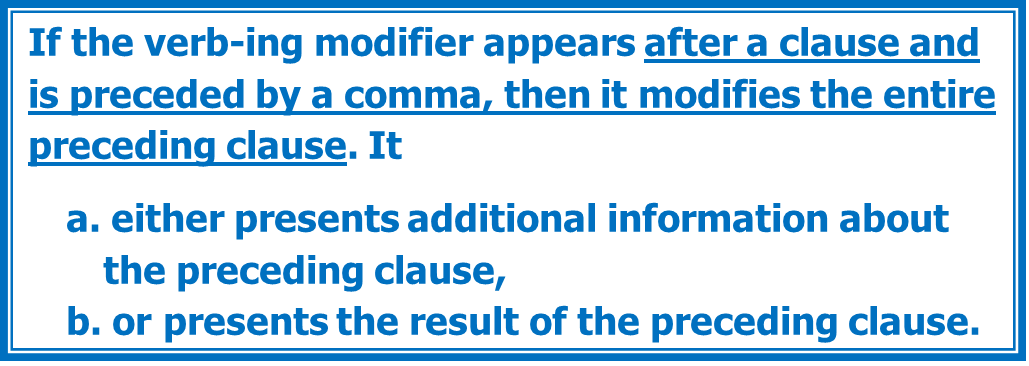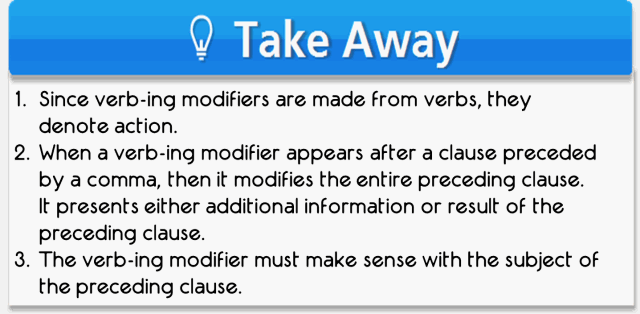Events & Promotions
|
|

GMAT Club Daily Prep
Thank you for using the timer - this advanced tool can estimate your performance and suggest more practice questions. We have subscribed you to Daily Prep Questions via email.
Customized
for You
Track
Your Progress
Practice
Pays
Not interested in getting valuable practice questions and articles delivered to your email? No problem, unsubscribe here.
- Nov 18
11:00 AM PST
-12:00 PM PST
Join us in a live GMAT practice session and solve 30 challenging GMAT questions with other test takers in timed conditions, covering GMAT Quant, Data Sufficiency, Data Insights, Reading Comprehension, and Critical Reasoning questions. - Nov 22
11:00 AM IST
-01:00 PM IST
Do RC/MSR passages scare you? e-GMAT is conducting a masterclass to help you learn – Learn effective reading strategies Tackle difficult RC & MSR with confidence Excel in timed test environment - Nov 23
11:00 AM IST
-01:00 PM IST
Attend this free GMAT Algebra Webinar and learn how to master the most challenging Inequalities and Absolute Value problems with ease. - Nov 25
10:00 AM EST
-11:00 AM EST
Prefer video-based learning? The Target Test Prep OnDemand course is a one-of-a-kind video masterclass featuring 400 hours of lecture-style teaching by Scott Woodbury-Stewart, founder of Target Test Prep and one of the most accomplished GMAT instructors.


VERB-ING MODIFIERS

If your answer to Julio's question is "No", then this article will surely help you. Verb-ing modifiers are one of the most heavily tested concepts in GMAT, and needless to mention one of the most dreaded concepts as well. The usage of this modifier often creates confusions because the function of a verb-ing modifier changes with the change in its placement in a sentence. This article is aimed at simplifying the usage of this “dreaded” modifier and helping you understand the functionality of this modifier better.
But before that, we have a small warm up exercise. Attempt this short quiz and see how well you understand this concept currently.

1. Students have been throwing away healthy meals made available in school cafeteria by The Los Angeles Unified School District and bringing their own junk food to school, and these forced the district to bring back some of the foods it worked so hard to replace.
A. school, and these forced
B. schools, which forced
C. schools, forcing
2. In three months, biologist Glauco Machado gathered enough information about large numbers of a relatively unstudied order of arachnids to persuade an ant specialist at the university to advise him and to publish his first scientific paper.

A. arachnids to persuade an ant specialist at the university to advise him and to publish
B. arachnids, persuading an ant specialist at the university to advise him and publishing
C. arachnids persuading an ant specialist at the university to advise him and publishing
ANSWER KEY
1. C.
2. A.
(Detailed solutions in sections RULE SET #1 and RULE SET #2 respectively. Rule Set #2 will be covered in a separate article soon to follow.)
UNDERSTANDING VERB-ING MODIFIERS
As the name suggests, verb-ing modifiers are the words that are constituted from “verbs” by adding “ing” to them. Essentially, these modifiers modify a particular entity in the sentence. The modification depends upon the placement of the modifier in the sentence, i.e. where and how they appear in the sentence. Since these modifiers are made from verbs, they denote action.
For example:
Mary cooked delicious food, using fresh condiments.
In this sentence, the verb-ing modifier “using fresh condiments” denotes an action. It communicates the meaning - Mary used fresh condiments.
PLACEMENT OF VERB-ING MODIFIERS
The function played by a verb-ing modifier depends upon where and how it appears in the sentence. The verb-ing modifiers can take three places in a sentence:
1. Placed after a clause PRECEDED by a comma,
2. Placed after a clause NOT PRECEDED by a comma,
3. In the beginning of a clause followed by a comma.
Needless to say that the function of the verb-ing modifier changes with the change in its placement in regards to the three structures mentioned above. Let’s discuss the first structure that brings us to our first rule set for this modifier.

The verb-ing modifier can be placed after a clause and separated from the preceding clause by a comma.

SIMPLE EXAMPLES: Presenting Additional Information
• Mary made a beautiful bouquet, arranging rare exotic flowers in certain symmetry.
This sentence means that Mary made a beautiful bouquet. And how did she do it? This question is answered by the verb-ing modifier “arranging rare exotic flowers in certain symmetry”. i.e. Mary made a beautiful bouquet BY ARRANGING rare exotic flowers in certain symmetry.
In this sentence, verb-ing modifier is preceded by a comma. This means that this modifier modifies the preceding clause. In this sentence, the verb-ing modifier is presenting additional information about the preceding clause.
GMAT like SENTENCE: Presenting Additional Information
• For decades now, Illinois Natural History Survey biologists in aluminum skiffs have scooted up and down the thinly wooded banks of the Illinois river and monitored local fish, catching, recording, and releasing approximately 150,000 of them a year.
This sentence means that for a very long time now, the INHS biologists have gone to the banks of the Illinois river in aluminum skiffs and have monitored local fish. And how they have monitored local fish? They have done so by catching, recording, and releasing some 150,000 fish a year.
In this sentence, all the three verb-ing modifiers (parallel entities) appear in the sentence after the clause preceded by comma. Hence, they modify the preceding action (have) monitored. Per the context of this sentence, we know that the three verb-ing modifiers are presenting additional information about the preceding action. The three modifiers explain how the biologist did the job of monitoring local fish. They monitored local fish by catching them, putting them in records, and releasing them back in the river.
SIMPLE EXAMPLES: Presenting result
• Mary made a beautiful bouquet, winning accolades from every one.
This sentence tells us that Mary made a beautiful bouquet. It further explains that this action resulted in Mary winning a lot of accolades from every one.
In this sentence, the verb-ing modifier appears after the clause preceded by a comma. This means the modifier will modify the entire preceding clause. In this sentence "winning accolades from every one" is presenting the result of the preceding clause.
GMAT like SENTENCE: Presenting Result
Let us bring our “warm-up exercise” question #1 here. Let us solve that GMAT like question to see why the correct answer is correct and how this rule set is applicable in that question.
Q#1 - WHY THE CORRECT ANSWER IS CORRECT
• Students have been throwing away healthy meals made available in school cafeteria by The Los Angeles Unified School District and bringing their own junk food to school and these forced the district to bring back some of the foods it worked so hard to replace.
We will apply the e-gmat three-step process to solve this problem.
STEP 1: MEANING ANALYSIS
This sentence says that Los Angeles Unified School District added healthy meals to the school cafeteria. But students have been throwing away these healthy meals and have been bringing their own junk food. As a result of these actions, the district was forced to bring back some of the foods it worked so hard to replace.
STEP 2: ERROR ANALYSIS
Let’s now split the sentence into clauses to spot the errors:
• Students have been throwing away healthy meals made available in school cafeteria by The Los Angeles Unified School District and bringing their own junk food to school
• and these forced the district to bring back some of the foods
o it worked so hard to replace.
In the second clause, pronoun “these” have been used to refer the actions of “throwing healthy meals” and “bringing junk food”. This usage is not correct because “these” is a pronoun. It can only refer to a noun or another pronoun. It cannot be used to refer to an action or a clause.
STEP 3: POE
A. school and these forced: Incorrect for the reason discussed during error analysis.
B. schools, which forced: Incorrect. Notice that “which” is a noun modifier that refers to the preceding noun or noun phrase. In this choice, “which” is referring to “schools”. This is illogical. Also notice that “which” is a relative pronoun that abides by the same rules for pronoun. Hence, “which” cannot be used to present the result of the preceding clause.
C. Schools, forcing: Correct. The verb-ing modifier “forcing” appears in this sentence preceded by a comma. This means that “forcing” is modifying the preceding clause. Per the context of the sentence, comma + forcing, in this choice, is correctly presenting the result of the preceding clause.

Applying RULE SET #1 on OG 12 #47
Five fledgling sea eagles left their nests in western Scotland this summer, bringing to 34 the number of wild birds successfully raised since transplants from Norway began in 1975.
(A) bringing
(B) and brings
(C) and it brings
(D) and it brought
(E) and brought
We will solve this question, using e-gmat three-step process.
STEP 1: MEANING ANALYSIS
The sentence says that this summer, five fledgling sea eagles left their nests in western Scotland. This action brought to 34 the total number of wild birds that have been successfully raised since transplants from Norway started in 1975.
STEP 2: ERROR ANALYSIS
Let us split the sentence into clauses to spot the errors.
• Five fledgling sea eagles left their nests in western Scotland this summer, bringing to 34 the number of wild birds successfully raised
o since transplants from Norway began in 1975.
The only word underlined in this sentence is the verb-ing modifier “bringing”. This modifier appears after the main clause preceded by a comma. This means it modifies the preceding clause. The use of this modifier is correct here because per the context, it presents the result of the preceding clause - one of the functions of the verb-ing when preceded by a comma. Hence, there is no error in this sentence. This sentence is correct as is.
STEP 3: POE
Through this step we will find out why the other answer choices are incorrect.
(A) bringing: Correct as explained during error analysis.
(B) and brings: Incorrect. “brings” is not the correct verb tense to refer to an action that took place in the past. Furthermore, use of ‘comma + and’ to connect two entities in a list – here two verbs of the same subject - is not correct.
(C) and it brings: Incorrect.
i. Singular pronoun “it” neither can refer to plural “eagles” nor can refer to the preceding clause. A pronoun can only refer to a noun or another pronoun.
ii. Repeats the same verb tense error as in Choice B.
(D) and it brought: Incorrect. Repeats the same pronoun error as in Choice D.
(E) and brought: Incorrect. Use of ‘comma + and’ to connect two entities in a list – here two verbs of the same subject - is not correct.
A POINT TO REMEMBER
As mentioned earlier, verb-ing modifiers are made from “verbs” and they denote action. Now, any action needs a doer. In the same way, the verb-ing modifiers also associate with the subjects of the preceding clause. What we must keep in mind is that the action denoted by verb-ing must make sense with the subject of the clause. The use of verb-ing is correct only if it makes sense with the subject of the clause it is modifying.
For example:
• Sachin Tendulkar played an exceptionally outstanding innings, making the team win gloriously.
The sentence means that Sachin played a superbly good innings. And the result of this action led to the victory of the team in a glorious manner. So, the verb-ing modifier “making” preceded by a comma is presenting the result of the preceding clause.
Now, “making” is an action that needs a subject. Per the rule, it will associate with the subject of the preceding clause. Now, the subject of the preceding clause “Sachin” did the action of playing a superb innings. So the subject is the doer. Hence, “making” will associate with the same subject and will suggest that that Sachin “made” the team win. This association perfectly makes sense. Because Sachin did make the team win by playing a superb innings. Hence, the usage of the verb-ing modifier is absolutely correct here.
Now let’s take this example:
• Joe became the CFO of the company, increasing his pay significantly.
Here the verb-ing modifier “increasing” appears after the clause and is preceded by a comma. This means that this modifier will modify the preceding clause either by presenting additional information about the preceding clause or by presenting the result of the preceding clause.
Now, per the intended meaning of the sentence, Joe became the CFO of the company. This event led to increase in his salary. Now, the subject of the sentence is “Joe”. However, he is not the doer of the verb “became”. He did not make himself the CFO of the company. Now look at the verb-ing modifier “increasing”. Since verb-ing modifier denotes an action and hence associates with a verb, “increasing” associates with “Joe”. The sentence thus means that Joe became the CFO of the company and as a result he increased his salary. We know that this is not even a possibility. What resulted in Joe’s increased salary is the event of his becoming the CFO.
Hence, even if this sentence appears to be written in appropriate construction, it is incorrect since here the verb-ing modifier does not make sense with the subject of the preceding clause. This sentence can be written correctly as follows:
• Joe became the CFO of the company, a move that increased his pay significantly.

OG QUESTIONS YOU CAN PRACTICE USING THESE RULE SETS
Apply these rule sets to the following OG questions. For more practice, register for free at e-gmat.com and quizzes available in the trial concepts.
OG 12# 30, 65, 94
OG Verbal Review 2# 14, 78,
OG 13# 97
Watch out for our next article in the “Verb-ing Modifiers Series” to learn about the other rule-sets.
Thanks.
Shraddha
Attachments
![]() Verb-ing Modifier Article 1 - GC.pdf [557.43 KiB]
Verb-ing Modifier Article 1 - GC.pdf [557.43 KiB]
Downloaded 6726 times
Kudos
Bookmarks
great article.
I wish you to explain more.
regarding verb-ing used after a clause and comma, I have a question. In this case I see that the meaning relation between verb-ing and the previous clause is varied. The meaning relation is not about HOW the action in the previous clause is performed or WHAT RESUTL the action in the previous clause creates. I wish e-gmat experts show more kinds of meaning relation. This thing helps understand the intended meaning and so critical to success on SC.
I see that on many og and gmatprep questions, the meaning relation is not about HOW and RESULT .
Thank you.
I wish you to explain more.
regarding verb-ing used after a clause and comma, I have a question. In this case I see that the meaning relation between verb-ing and the previous clause is varied. The meaning relation is not about HOW the action in the previous clause is performed or WHAT RESUTL the action in the previous clause creates. I wish e-gmat experts show more kinds of meaning relation. This thing helps understand the intended meaning and so critical to success on SC.
I see that on many og and gmatprep questions, the meaning relation is not about HOW and RESULT .
Thank you.
Kudos
Bookmarks
That is pretty useful!
Am attaching CR bible, it is the best one for CR
Am attaching CR bible, it is the best one for CR











